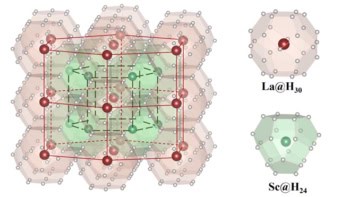German physicists have shown for the first time that Bose-Einstein condensates can be created and manipulated using so-called atom chips. The achievement by Jakob Reichel and colleagues at Ludwig-Maximilians University in Munich could form the basis of integrated 'atom circuits' based on the motion of atoms rather than electrons. A lithographic technique was used to create the effect, which could bring devices such as quantum computers a step closer (W Hänsel et al 2001 Nature 413 498).
A Bose-Einstein condensate is a super-cold cloud of gas atoms that are all in the same quantum state. This means that a single wave function describes the behaviour of all the atoms, and the quantum properties of the atoms can be seen in the macroscopic behaviour of the condensate.
To make the atom chip, Reichel’s team deposited two parallel gold wires, each 50 micrometres wide, onto the surface of a chip just under two centimetres across. The team confined a gas of rubidium atoms in a conventional magneto-optical trap and then transferred them to the microtrap generated by the atom chip. The magnetic fields of the microtrap are generated by electric currents of a few amps that flow through the gold wires on the atom chip.
After a strong magnetic field compressed the gas, a blast of radio waves was then applied to cool the atoms and create a Bose-Einstein condensate containing about half a million atoms. The condensate hovers a few micrometres above the surface of the chip, held in place by the magnetic field.
Once the condensate is trapped, Reichel and co-workers sent a series of electrical pulses along the parallel gold wires, which pushed the magnetic field along. This ‘magnetic conveyor belt’ dragged the condensate 1.6 millimetres across the surface of the chip – a huge distance in quantum terms.
The small scale of the new technique means that clouds of gas atoms can be chilled to the correct temperature ten times faster than is possible with conventional traps. Such rapid cooling means that a perfect vacuum – which is difficult to maintain – is unnecessary. The proximity of the condensate to the surface is also an important achievement because physicists believed that this would destroy the fragile quantum state. Bose-Einstein condensates are usually created inside relatively large vacuum chambers to shield them from collisions with other atoms.
Modern lithography can create structures smaller than 100 nanometres in size, and this makes the new technique extremely versatile. This will allow physicists to manipulate Bose-Einstein condensates in many different ways, which could benefit fields as diverse as interferometry, holography, microscopy and quantum information processing.



